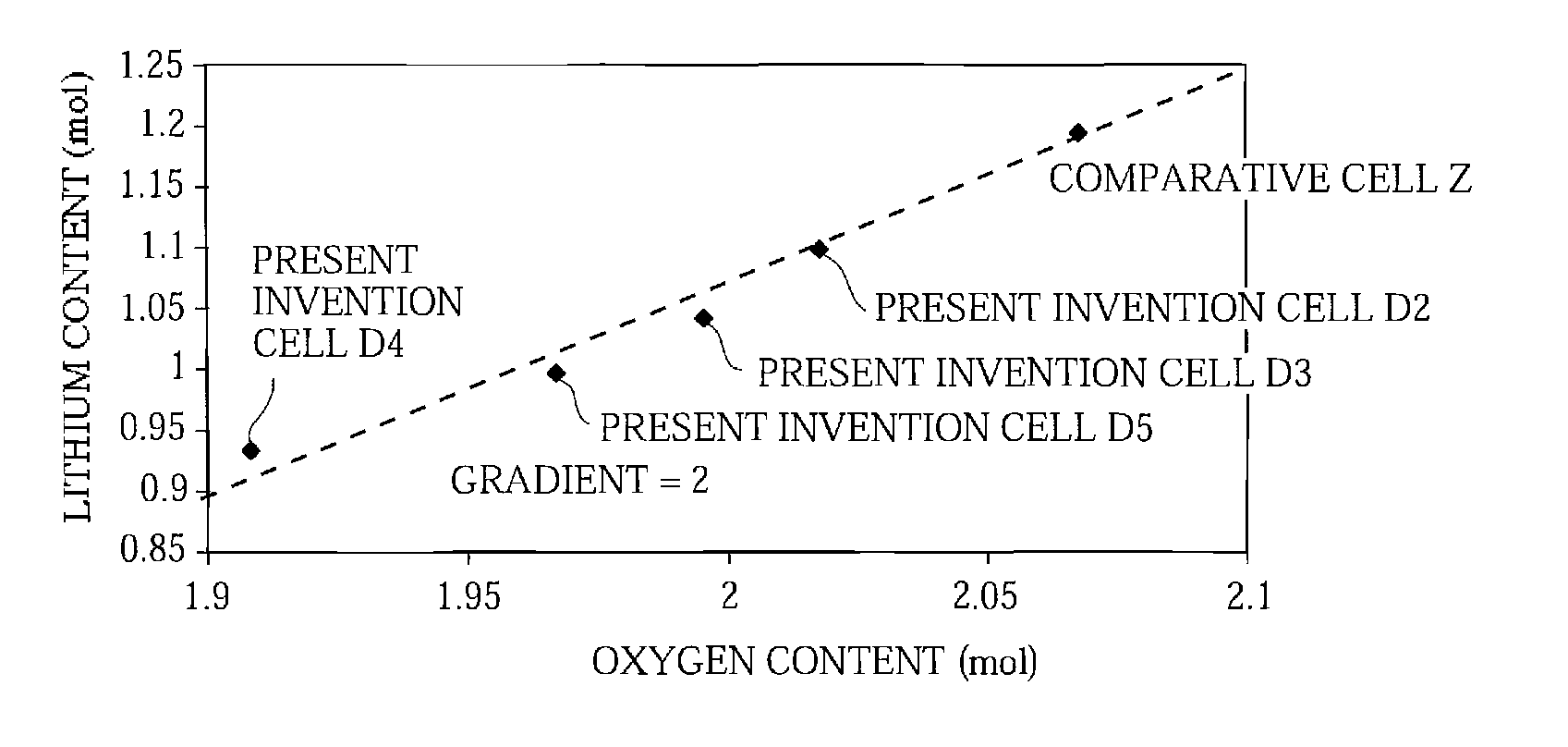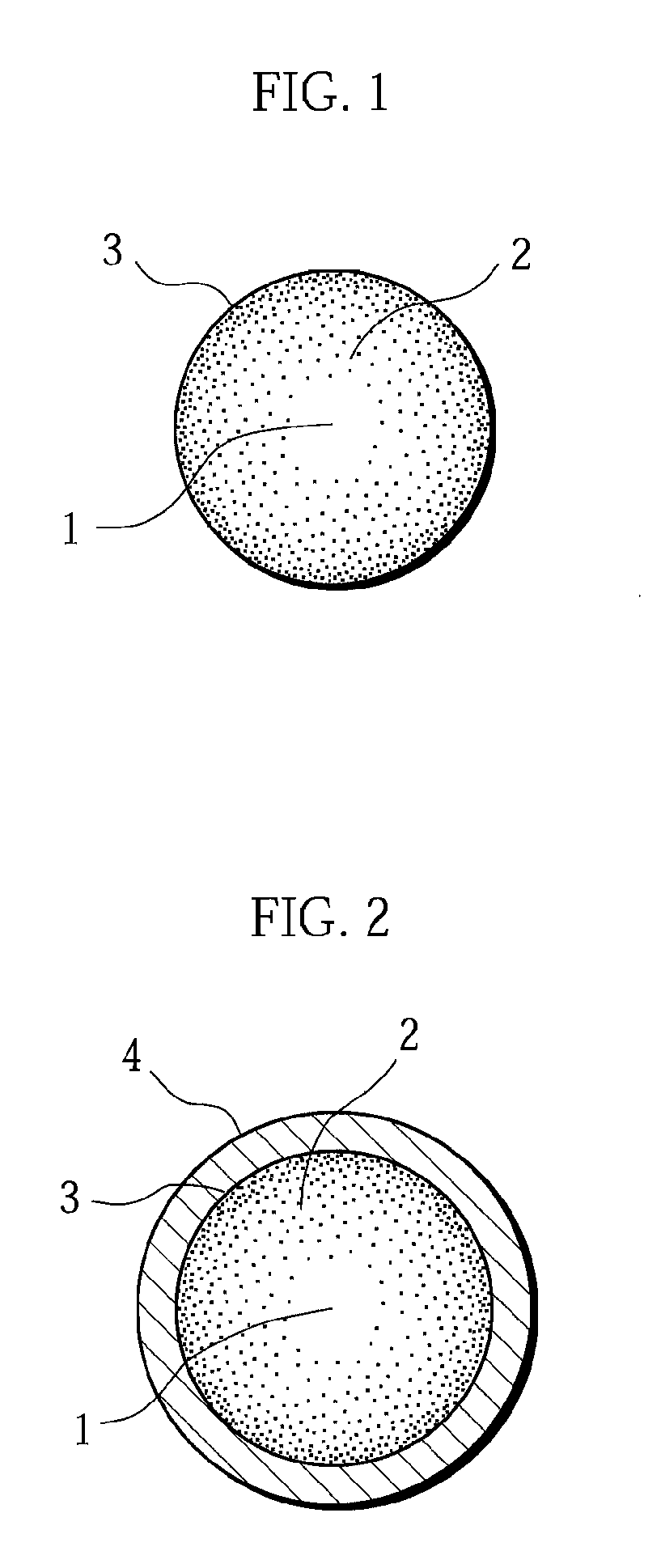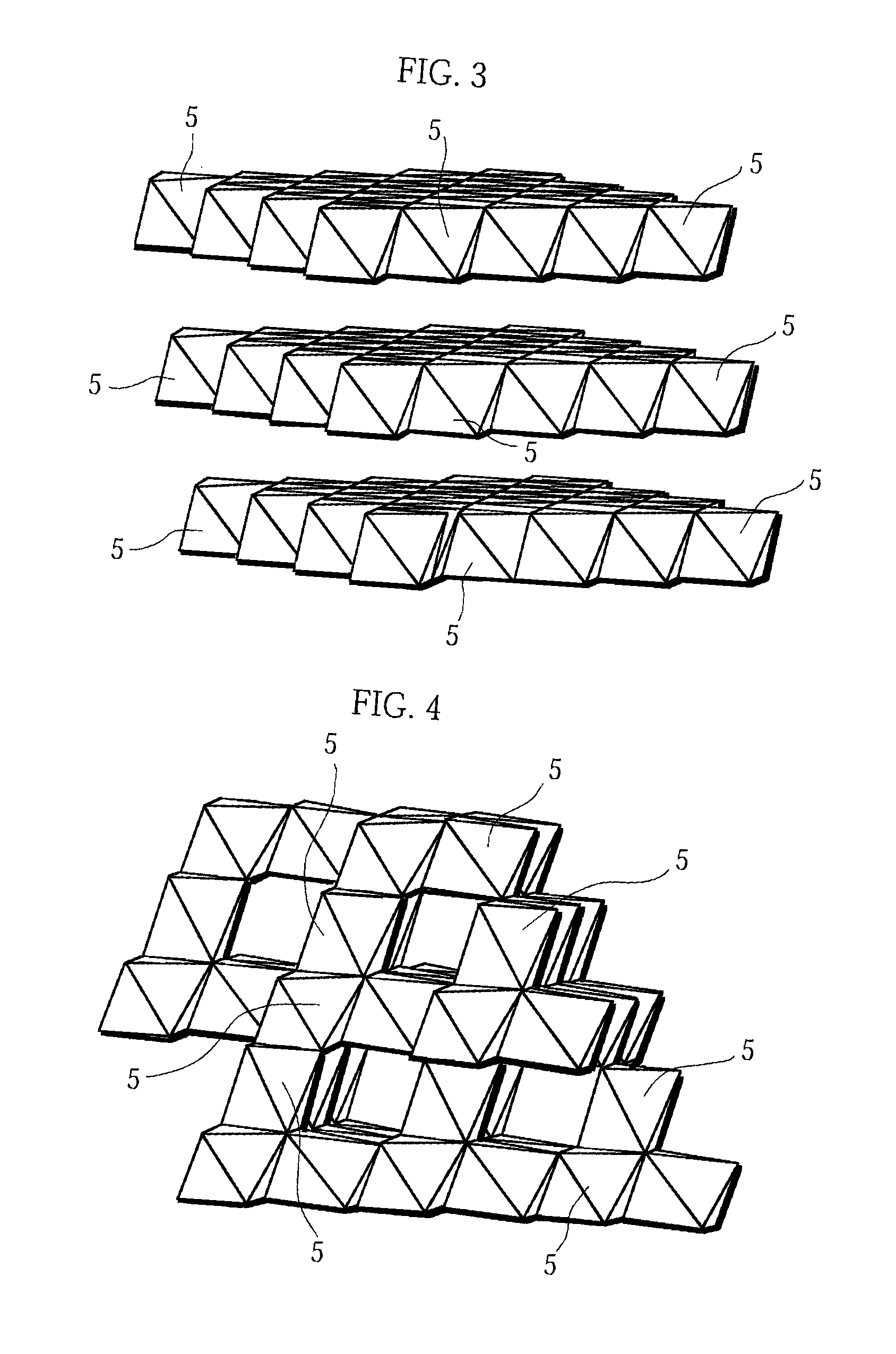Positive electrode active material, method of manufacturing the positive electrode active material, and non-aqueous electrolyte secondary battery using the positive electrode active material
a technology of active materials and active materials, which is applied in the direction of electrochemical generators, cell components, electrochemical generators, etc., can solve the problems that the high-rate capability cannot be significantly improved, and achieve the effects of improving cycle performance, improving high-rate capability, and easy insertion and deinsertion
- Summary
- Abstract
- Description
- Claims
- Application Information
AI Technical Summary
Benefits of technology
Problems solved by technology
Method used
Image
Examples
examples
First Group of Examples
example a 1
[0059]A test cell was prepared according to the same manner as described in the foregoing embodiment.
[0060]The test cell prepared in this manner is hereinafter referred to as a present invention cell A1.
examples a2
to A4
[0061]Cells were fabricated in the same manner as described in Example A1 above, except that, when preparing the positive electrode active material, the proportions of NH4H2PO4 were set at 2 mass %, 5 mass %, and 10 mass %, respectively.
[0062]The cells fabricated in these manners are hereinafter referred to as present invention cells A2 to A4, respectively.
PUM
| Property | Measurement | Unit |
|---|---|---|
| temperature | aaaaa | aaaaa |
| temperature | aaaaa | aaaaa |
| charge-discharge efficiency | aaaaa | aaaaa |
Abstract
Description
Claims
Application Information
 Login to View More
Login to View More - R&D
- Intellectual Property
- Life Sciences
- Materials
- Tech Scout
- Unparalleled Data Quality
- Higher Quality Content
- 60% Fewer Hallucinations
Browse by: Latest US Patents, China's latest patents, Technical Efficacy Thesaurus, Application Domain, Technology Topic, Popular Technical Reports.
© 2025 PatSnap. All rights reserved.Legal|Privacy policy|Modern Slavery Act Transparency Statement|Sitemap|About US| Contact US: help@patsnap.com



